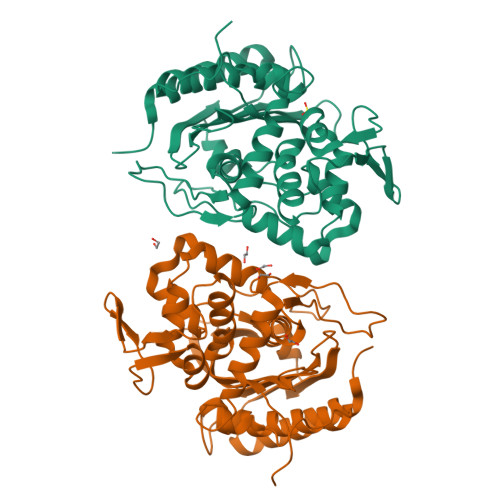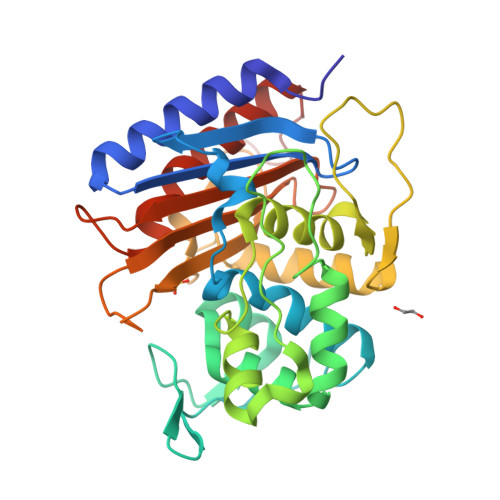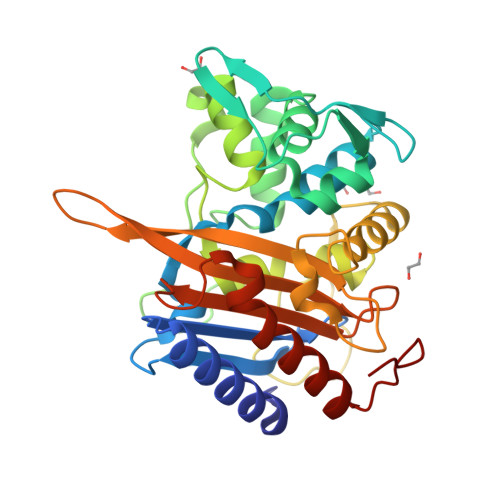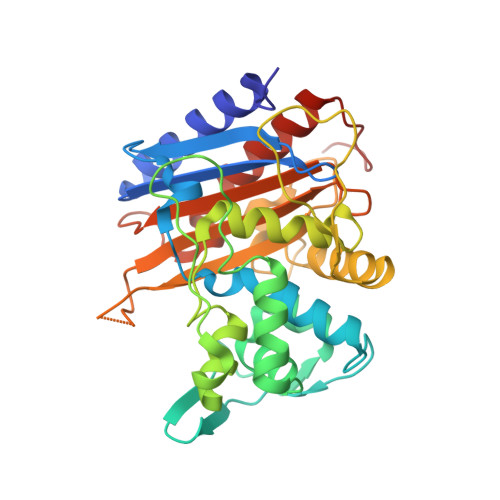Mutations in PBP2 from ceftriaxone-resistant Neisseria gonorrhoeae alter the dynamics of the beta 3-beta 4 loop to favor a low-affinity drug-binding state.
Fenton, B.A., Tomberg, J., Sciandra, C.A., Nicholas, R.A., Davies, C., Zhou, P.(2021) J Biological Chem 297: 101188-101188
- PubMed: 34529975
- DOI: https://doi.org/10.1016/j.jbc.2021.101188
- Primary Citation of Related Structures:
6XQV, 6XQX, 6XQY, 6XQZ - PubMed Abstract:
Resistance to the extended-spectrum cephalosporin ceftriaxone in the pathogenic bacteria Neisseria gonorrhoeae is conferred by mutations in penicillin-binding protein 2 (PBP2), the lethal target of the antibiotic, but how these mutations exert their effect at the molecular level is unclear. Using solution NMR, X-ray crystallography, and isothermal titration calorimetry, we report that WT PBP2 exchanges dynamically between a low-affinity state with an extended β3-β4 loop conformation and a high-affinity state with an inward β3-β4 loop conformation. Histidine-514, which is located at the boundary of the β4 strand, plays an important role during the exchange between these two conformational states. We also find that mutations present in PBP2 from H041, a ceftriaxone-resistant strain of N. gonorrhoeae, increase resistance to ceftriaxone by destabilizing the inward β3-β4 loop conformation or stabilizing the extended β3-β4 loop conformation to favor the low-affinity drug-binding state. These observations reveal a unique mechanism for ceftriaxone resistance, whereby mutations in PBP2 lower the proportion of target molecules in the high-affinity drug-binding state and thus reduce inhibition at lower drug concentrations.
Organizational Affiliation:
Department of Biochemistry, Duke University School of Medicine, Durham, North Carolina, USA.





















